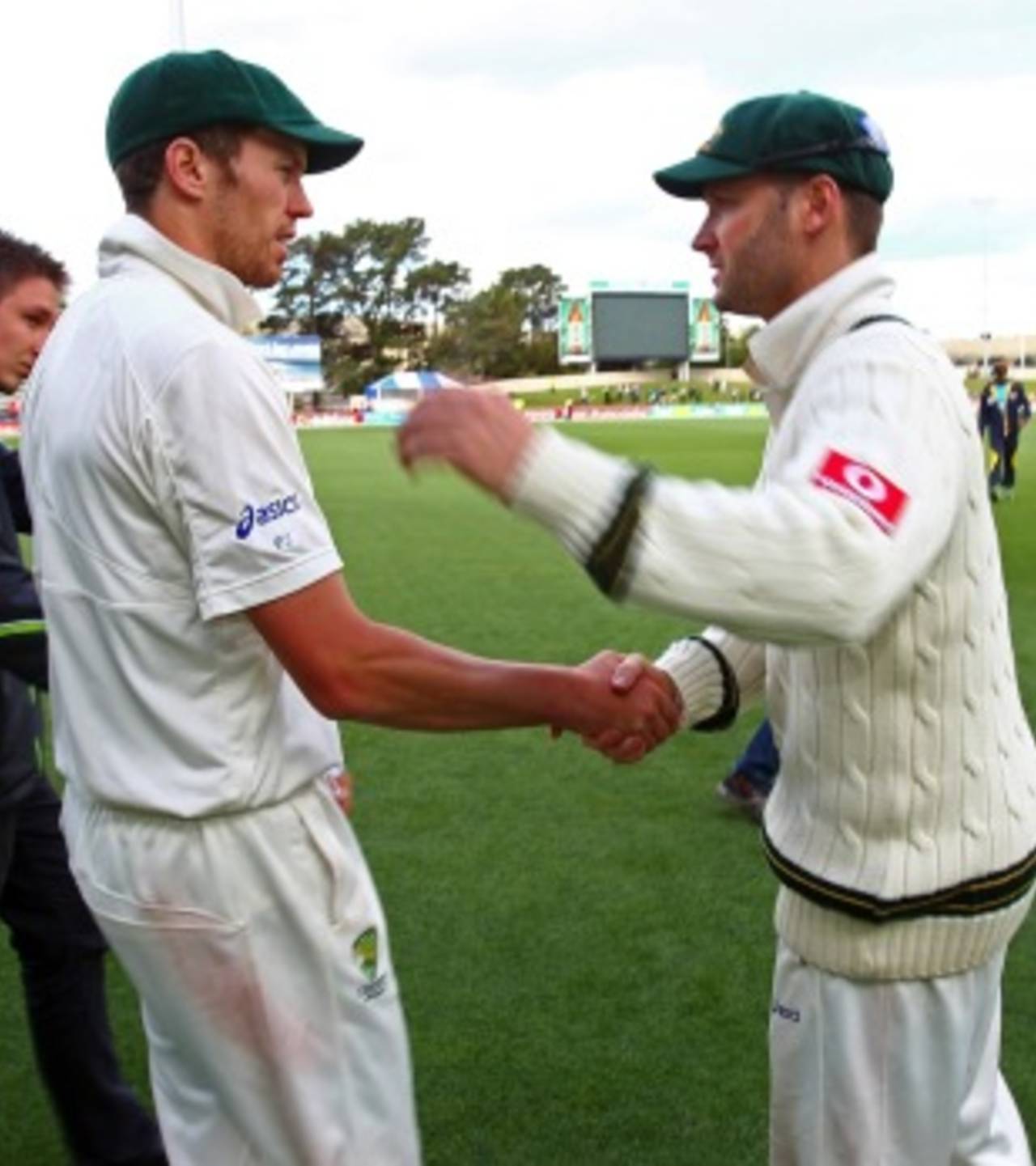Michael Clarke has defended Australia's selection process throughout the summer, declaring that the policy of resting players with minor niggles made sense due to the evenness of Australia's talent base. Clarke has returned to the one-day team for the third match against Sri Lanka in Brisbane on Friday after being left out of the first two games to rest his hamstring.
It was one of several times during the summer that Australia omitted men who could have played but were kept on the sidelines as injury precautions. Peter Siddle and Ben Hilfenhaus sat out of the Perth Test against South Africa after their heavy workloads in the previous Test, and with both men suffering minor injuries, and a month later Mitchell Starc was rested from the Boxing Day Test, although it was not until this week that it was revealed he had bone spurs in his ankle.
Clarke conceded that at times during this season the public had not been made aware of injury niggles to players who were rested, although he said the team was wary of revealing information that might be used by the opposition. However, he said all the decisions made by the selection panel made sense given what the selectors knew about the players' fitness levels.
"There's a lot that is spoken about within the group that people outside the group probably aren't aware of," Clarke told reporters in Brisbane. "We've probably seen some cases throughout the past 12 months where guys have not been 100% fit or had little niggles that probably haven't been communicated as well as they needed to be to the media, and in essence to the public.
"The Perth Test match was a great example. Call it resting Peter Siddle and Ben Hilfenhaus [but] the facts were they just weren't fit enough to perform at their best. The two guys who we brought in for Siddle and Hilfenhaus [John Hastings and Mitchell Johnson], we were confident that they could do a better job at 100% than those guys at 70 or 80%."
Such decisions have brought severe criticism from a range of former players this summer, including Shane Warne, Brett Lee and Ian Chappell. But Clarke said he believed rotating out players who had minor injury worries made sense in the current era, whereas during the days when Steve Waugh and Ricky Ponting were in charge of a dominant side, it would not have been a sensible move.
"The issue where the Australian team now is compared to where it was ten years ago, is ten years ago you had four, five, six, seven great players in one team, so if they were 80% fit, they were still good enough to win a game for Australia," Clarke said. "Where we sit now as a team is, it's a lot different to that.
"The gap between the 11 players that take the field and the 12th, 13th, 14th, 15th, 16th player is quite close, so if you're not 100% fit to perform at your best, it's not worth the risk for the team for you to take to the field and let the team down.
"What the public wants to see is the best possible Australian team on the field, every game, and honestly I think we're trying to do that. I really do. I think the risk of playing someone when they're not 100% fit, if they do get injured, can put them out for six weeks, six months."
Brydon Coverdale is an assistant editor at ESPNcricinfo. He tweets here
